
It hasn’t quite worked out as planned. Perrone painted, cleaned and decorated the old building, using vintage parts salvaged from the old grocery store in many places, and it looks just about ready to open. (In fact, an “Open” sign usually sits in the doorway.) But it remains officially closed, as it has since 2008 when the Seattle Department of Planning and Development (DPD) notified Perrone that he could not operate a “community theater” in part of the building.

The building’s history goes back a long way on Beacon Hill. Louis DeVos brought his family to the Hill in 1908, and in 1909, they moved into a house on South Shelton Street. A few years later, Louis bought the plot of land at 13th and Shelton and built a retail building there, first renting it to an Italian grocer, then establishing his own grocery business. The family business was successful, and eventually grew to include three stores including one at 2718 Beacon Avenue South (currently the location known as the empty “South China Restaurant” lot just south of Beacon Hill Station). Though two of the DeVos stores were closed during the Depression, the store at 13th and Shelton remained open into the 21st century, finally closing for good in August 2005. It was sold to Perrone as a “tear-down” in 2006.
Though the building had operated continuously as a commercial building since it was built in 1915, later in the 20th century the site was rezoned to SF5000 — single-family housing. Existing businesses such as the DeVos Grocery are allowed to continue in operation when their zoning changes, as a “non-conforming use.”
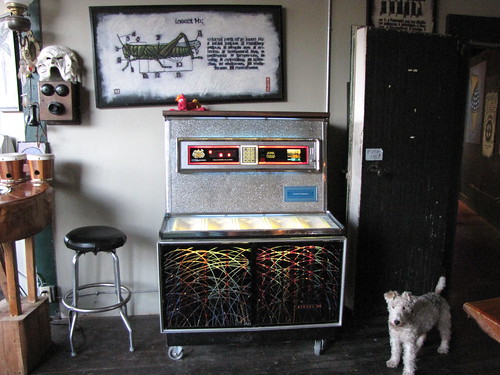
If the non-conforming use lapses for a certain amount of time, however, the building reverts to single-family, and a new business can’t go back to the non-conforming use. Seattle Municipal Code 23.42.104 B says: “A nonconforming use that has been discontinued for more than 12 consecutive months shall not be reestablished or recommenced.” There are certain exceptions, but it is unclear whether Perrone’s use of the DeVos building was what DPD required to maintain commercial status as required in the code. Perrone believes so; he did acquire a permit to install commercial-grade electrical service in the building, and he states that he also sold salvage from the building’s old contents to maintain commercial status until the coffeehouse could open.
In 2008, Perrone began using the building’s performance studio. In March of that year, the Beacon Hill Times/South District Journal (now South Seattle Beacon) ran an article about the plans for the former grocery, stating that it would be “a coffee shop, repertory theater and eventually an education center” and home to the Seattle Novyi Theatre repertory group.
In April of that year, a complaint was filed with DPD about his use of the building for theater rehearsals and performances. Perrone says that DPD declared the site in violation, and also told him that he could not legally live in the caretaker’s apartment and would be fined $1500/day for illegally residing there, retroactive to when he bought the building in 2006. “I owe the city a million and a half,” he says.
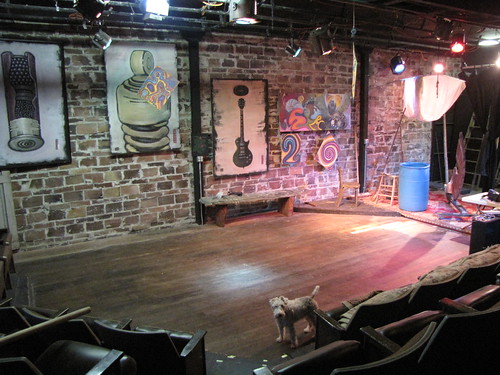
Later in 2008, says Perrone, he gave up, feeling pushed into a corner. In frustration, he told DPD “fine, turn it into a single-family residence.” Currently, an open application is on file with DPD to do so.
In the meantime, Perrone still fights to save the building for his original intended use, with pro bono help from a lawyer who grew up in the neighborhood. He has a petition signed by over 150 neighbors who support his plans for the DeVos building. “Only one neighbor said ‘no,'” he points out.
Neighbor Dayna Provitt sent a message to the Beacon Hill Mailing List recently, appealing for help for Perrone:
“My husband and I were so glad to see the building purchased, and Mike’s attempts to put something into this part of Beacon Hill that might help bring a ‘neighborhoody’ feel to the street. … Here’s a guy who’s trying to bring some energy and community building to our neighborhood… and getting stuck in red tape. We’d hate to see this building go back to being an empty space again. … Maybe someone in the neighborhood can help him cut through the red tape and get his project going! Something useful in this space would be so great for our street.”
With no way to legally open the coffeehouse, Perrone has been unable to pay the building’s mortgage since August. It is currently scheduled to be sold at a foreclosure sale on April 2, unless fate intervenes and Art’s on Beacon Hill can open.
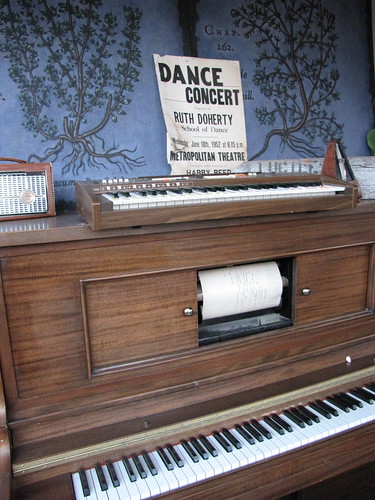
(More photos of the building after the jump.)
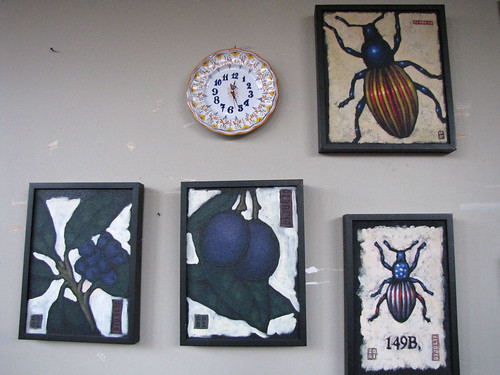

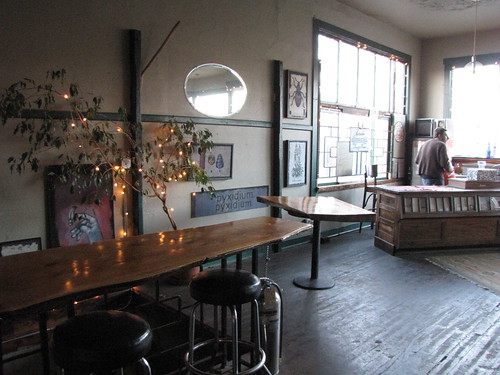

Argh! This would be a great addition to the neighborhood. It’s hard to imagine a neighbor would complain against this.
So, at a time when the economy is limping and people need work, our city wants to shut down a ready business and employment opportunity? And Art’s sounds like it’s more than just a business. It’s a place for community to come together, to plan, to express themselves, to create, to work on resumes! The City’s response seems short-sighted.
This is terrible news. It seems Seattle’s Office of Arts and Cultural Affairs could work with DPD to make this creative, community resource available to all. I agree with Deborah that this is a very short-sighted response from the DPD. These kinds of business often deter crime and enhance property values. If the pro-bono attorney has advice about how we can help, we’re all ears!
Someone complained, the city responded, and enforced the zoning that was established for the neighborhood. Unless you believe in selective enforcement or preferential treatment, I don’t see where the city did anything wrong.
Maybe the wisest course of action would be to contact a council person and see if this can’t be resolved by a waiver or something.
So how is it that he cannot live there? If its residential its his property to live in… if its commercial he should have his business. IMHO the worst thing that could happen is to have an unoccupied building to attract unsavories and temp them.
I can’t fault the city, but it is unfortunate that things escalated to this point. It’s a gorgeous space and a sad story. The Office of Arts & Cultural Affairs seems like a great ally…
What a cool space! Thanks for giving this the attention it deserves, Wendi.
Oh–and Sebastian is a scene stealer. What a photogenic little guy!
So, I’m wondering if there’s anyone reading this who might know someone who knows someone we might be able to hook up with Michae and/or his attorney? I wouldn’t mind liasioning if need be, we’re new to the reigon, so I hardly know who to ask myself..
Cheers,
-m
Melissa, there are a few more pictures of Sebastian in my picture set here:
http://www.flickr.com/photos/litlnemo/tags/artsonbeaconhill/
He is a very cute little dog and likes to pose for photos!
I just went back and re-read this article and it really seems that Michael is not working the system well. I would recommend talking to someone at Washington Lawyers for the Arts http://www.thewla.org/ and find someone more aggressive and specialized to take on this case.
One of the most infamous loop holes in the system is the caretaker clause that so many building owners abused in Pioneer Square when they were tearing down artist housing in the late 90’s such as the Washington Shoe Building. Basically owners were coming in, kicking out the artists and making entire floors into ‘caretaker lofts’ i.e. big fancy condos. It seems at the very least that Michael could use these same rules to stay in the caretakers apartment.
It seems that this should still be usable as a retail space, I think he needs to be more aggressive on this.
This is perfect example of how sustainability is removed from our neighborhoods by building codes. I remember when this was still a grocery just a few years ago. When I was growing up in Chicago, these little grocery stores were placed in neighborhoods every few blocks. You could walk a couple of blocks in any direction to get your basic grocery items-without using a car. There were hundreds of them in Chicago, Seattle, and every American city. That is sustainability. But now they are gone, and if DPD has their way, they will not be coming back. These small neighborhood businesses were destroyed by code and they can be brought back by code. This code should be changed to preserve the original function of these buildings, not to punish those who try to preserve it.
There are little pockets of commercial structures all over the city that unfortunately are in zones that don’t allow commercial use.
I think the real solution would be to change the zoning to allow whatever use was in place the last time the structure was used commercially (or whatever the current use is if the structure is still in commercial use).
Sadly many of these buildings become eyesores after reverting to the zoning imposed on them when they could be a neighborhood grocery, cafe, restaurant, or barber shop.
Hi – anyone know what happened with Art’s or whether they were able to work out a better loan?
Well it’s Sept. 22, 2010 and I am still here at ART’s. I have made great headway with the city, and have an open ended solution with DPD if I can survive bankruptcy. I have gone back to work in construction to help pay legal fees, build up a credit record of payments which will enable me to find a legitimate lender to which I can establish a mortgage with a decent interest rate. I have a 501c3 nonprofit entity, CULTURE FORUM, whose focus is art as education, who wishes to partner with ART’s in community building and establishing ART’s as a center for artists and non artists to gather and exchange dialouges, exhibits, that embrace and celebrate our diverse community. Presently we are fund raising to help out with money needed for the solution proposed by DPD. I cannot say enough about all the support… wow